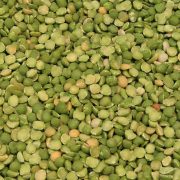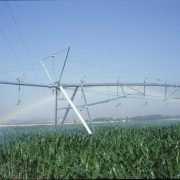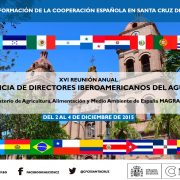Project INSPIA inspire environmental measures in the CAP
A day on the farm field Cortijo Maestre (Sevilla) was held to publicize the INSPIA (European Index for Sustainable Productive Agriculture) project. This project analyzes, on farms throughout Europe, the effectiveness of a set of GFP. Clara Aguilera, Vice President of the Agriculture Committee of the European Parliament, which actively participated in the visit, where he said that the conclusions of INSPIA serve to set environmental measures in future revisions of the CAP.
Agriculture faces major challenges because, as FAO warned in 2050 should produce 70% more food to meet the needs of a growing population. The challenge is to get it while reconciling the perspective of social welfare, protection of essential natural resources such as soil, water and biodiversity, and profitability for farmers has achieve sustainable agriculture.
For demonstrating that it is possible to meet this challenge has created the INSPIA project, whose acronym translated into Castilian explain their objective: to develop scientifically, with actual field data from a European Index Agriculture Productive and Sustainable. The INSPIA project is coordinated by the European Conservation Agriculture Federation (ECAF) and with the participation of the French Institute for Sustainable Agriculture (IAD) and the European Crop Protection Association (ECPA). In Spain, the Spanish Association of Agriculture Soil Conservation Living (CSSA SV) and the Business Association for the Protection of Plants (AEPLA) are the entities participating in the coordination activities of the network of farms and training of farmers and technicians.
58 farms spread across Europe
“INSPIA is an European project developed in four very different countries such as Spain are 30 farms in different agro-climatic zones, France, which contributes 24 farms, Belgium, with 3 farms and Denmark, with another one. The project aims to apply a set of 15 field devoted Good Agricultural Practice, on the one hand, the promotion of biodiversity through habitat improvement, establishment of multifunctional margins and the planting of species diversity, and secondly, those aimed at protecting the quality of water and soil conservation and curb erosion. Finally, the project also takes into account fundamental aspects of waste management on farms.” said “Paula Triviño, Technical Project Manager of the European Conservation Agriculture Federation (ECAF).
“The key to INSPIA is that the effectiveness of these 15 Good Agricultural Practices are measuring the each farm through 25 indicators that are recorded in a platform that is on the web. With these indicators we have established an optimization process, which is to create, each crop year, a diagram of sustainability, and its results reapply the most beneficial practices with a degree of improvement, allowing us to further analysis and generating a new optimized diagram. With all this, we want to establish performance standards which are for the European Commission to quantify improvements and move them to the policies of agriculture and environment,” said Emilio Gonzalez, director of the CSSA SV.
Indeed, in a visit to Cortijo Master he participated Clara Aguilera, Vice President of the Agriculture Committee of the European Parliament, who was impressed by the techniques used in this exemplary estate: “Although it will take time, change conventional agriculture by these techniques because it involves a change in the agricultural model and the mentality of farmers, who have to make them see that it is possible this type of farming, as higher profitability is obtained through the reduction of costs and, most importantly resulting in huge benefits to society.”
Finally, Carlos Palomar, director general of the Spanish Association for the Protection of Plants (AEPLA), explained the role of plant protection in sustainable agriculture: “The INSPIA project encourages use of agrochemicals through strategies tailored to crop needs and applying modern technologies, such as precision agriculture. We have to produce more with less and plant protection are a tool that we use common sense and protecting the environment. Agriculture is key to the defense of the environment and food can produce proposals along these Good Practices INSPIA project. In addition, INSPIA not forget the importance of proper waste management on the farm and their effective integration into the channels of recycling.”
Cortijo Maestre, an example of Good Agricultural Practices is a pioneer in the implementation of conservation agriculture techniques in the management of upland field crops and belongs to the European network of farms included in the project INSPIA. In the field visit all the attendees learned about farm management and good practices applied.
Pedro Maestre, responsible for the operation, said the leading crop rotation on the farm, with cereal, sunflower and legume management and how it is carried adapted to soil conditions and crop. In addition to performing an agricultural operation with a view to optimizing resources and maximizing profit, considering the environmental aspect and the social component is present. Thus, in addition to maintaining and improving the environment next to a creek that crosses the farm, some plots margins are maintained, and more susceptible roads, with different species that enhance biodiversity and prevent erosion. Gullies have also been regenerated, stabilizing them and introducing natural species.
To show intuitively diesel consumption by conventional tillage systems and conservation agriculture, they set about containers with the fuel used in each management system. Drawing on the experiences of the European project LIFE + Agricarbon, Manuel Gomez, head of the network of farms AEAC SV, reported that “the diesel used in conventional tillage is approximately 50 l / ha, while in direct seeding just over 20 l / ha “. He also had several direct seed drills both cereal as monograno, explaining the different elements that comprise. Similarly, the emphasis on technology implemented on tractors, such as automatic guided GPS or high flotation tires, which improve traffic on the plots, it’s better distribute weight and efforts on the ground, causing a smaller footprint and surface compaction.
July Roman, Technician “TOPPS Water Protection” project of the University of Cordoba, was in a very practical way how “can reduce runoff and erosion by up to 90% by the vegetation cover and multifunctional margins plus conserve soil, they are a very effective strategy to promote biodiversity on farms “.
Source: AEAC.SV/ AEPLA










